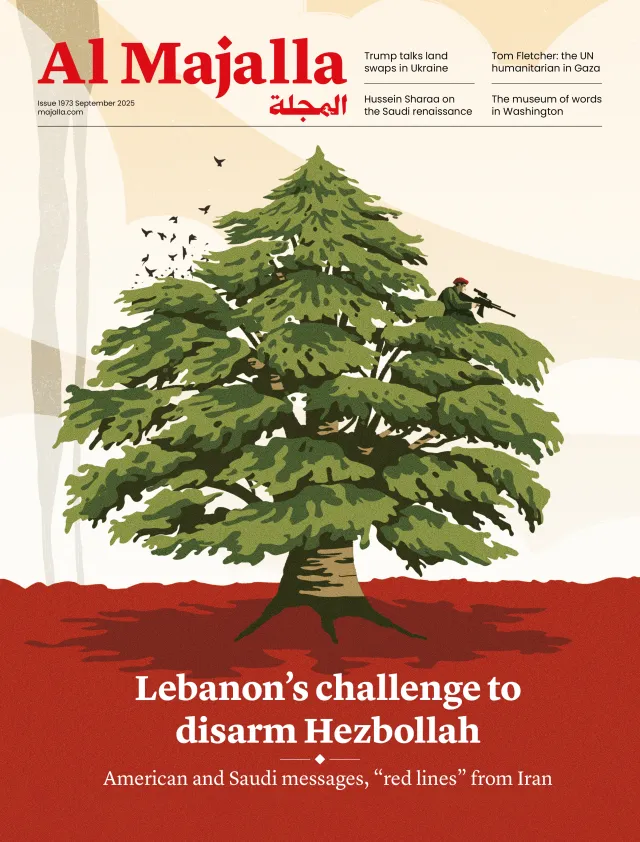 A Los Angeles Airport Police officer watches over travelers at Los Angeles International Airport on July 2, 2016 in Los Angeles, California. Security is stepped up for the busy Fourth of July travel weekend following deadly attacks on an airport in Turkey that claimed 44 lives, and in Bangladesh where 20 hostages were killed. A pro-ISIS twitter account threatened attacks at airports in Los Angeles, London Heathrow and New York JFK airports but officials are doubting its credibility. (Photo by David McNew/Getty Images)[/caption]
A Los Angeles Airport Police officer watches over travelers at Los Angeles International Airport on July 2, 2016 in Los Angeles, California. Security is stepped up for the busy Fourth of July travel weekend following deadly attacks on an airport in Turkey that claimed 44 lives, and in Bangladesh where 20 hostages were killed. A pro-ISIS twitter account threatened attacks at airports in Los Angeles, London Heathrow and New York JFK airports but officials are doubting its credibility. (Photo by David McNew/Getty Images)[/caption]
by Joseph Braude
Reports that Iraqi Baathists, Iranian elements, and others have played a role in the workings of ISIS do not appear to be in keeping with the principle of ideological purity on which the ISIS says it is based. Yet thinly veiled within the organization lie doctrinal and ideological tensions and divisions — notably, the tension between proponents of an expansionist caliphate on the one hand and stalwarts of the Iraqi Baath regime on the other. The movement’s ideologues have meanwhile worked to nurture an outlook of flexibility toward people of differing political, ethnic, and sectarian backgrounds whose expertise or resources may be of value, enabling the leadership of the organization to set aside doctrinal purity for expediency’s sake when necessary.
Such is the impression formed through discussion with three Americans who specialize in ISIS and have knowledge of American policy deliberations over how to defeat the group: Scott Stewart, Vice President of Tactical Analysis at the American global intelligence company Stratfor, had been a special agent with the U.S. State Department for 10 years and was involved in hundreds of terrorism investigations. Jacob Olidort, a scholar of Salafism and Islamist movements at the Washington Institute for Near East Policy. Olidort has briefed a range of US Government divisions and branches. The online Syria journalism portal Syria Deeply lists him as one of the “top 8 analysts of ISIS to watch” in the United States. And Michael Weiss, a prominent researcher and media voice on the ISIS, is coauthor of the New York Times-bestselling book ISIS: Inside the Army of Terror.
The conflict between jihadist expansionists and Iraqi nationalists
The three ISIS specialists largely agree that there is tension among the leadership of the group on overall purpose of ISIS. On the one hand, the most prominent ideologues — including Abu Bakr al-Baghdadi himself, Abu Aseel al-Absi, and of course the foreign fighters who flock to the territory from across the world — believe in an expansionist caliphate that should ultimately encompass the globe. On the other hand, some elements within the ISIS military leadership who originally served as stalwarts of Saddam Hussein’s Baath party may ultimately harbor the more modest agenda of holding and stabilizing a Sunni Iraqi national enclave. “This is a very common point of tension across the jihadist movement internationally,” according to Scott Stewart, the Vice President of Tactical Analysis at Stratfor and former State Department counterterrorism investigator. “We saw a similar phenomenon with Al-Shabab in a conflict between the more nationalist jihadis on the one hand and the transnationalists on the other. We’re seeing it with Jabhat al-Nusra right now, in the friction between more nationalist fighters and more transnational Al-Qaeda types. And of course, we find it in ISIS.”
Michael Weiss, coauthor of the New York Times-bestselling book ISIS: Inside the Army of Terror, noted that alongside caliphal ideologues like Abu Aseel al-Absi, numerous Iraqi Baathis played vital roles in the development of ISIS since its beginnings. In addition to the well-known example of Izzat al-Duri, Weiss cited Samir Abu Muhammad Al-Kalifawi — aka “Hajji Bakr — formerly a member of the air force intelligence unit of Saddam’s regime, who played an instrumental role in the creation of the ISIS network in northern Syria that enabled the group to occupy the area.
To draw a distinction within ISIS between lifelong political Islamists on the one hand and former Baathis on the other is not to preclude substantial crossover between the two camps, or to suggest that numerous former Baath party members who now serve ISIS do not firmly believe in its ideological tenets. To the contrary, for some ex-Baathis in the organization, belief in a form of “political Islam” may actually date back to their years of service in Saddam’s regime. Michael Weiss pointed out that the late Abd al-Rahman al-Balawi, who served as a member of the ISIS military council, had been a graduate of Saddam’s “Hamla Imaniya” (“Faith Campaign”). The campaign, led in the early 90s by Izzat al-Duri, fused pan-Arabism with a variety of Islamist militarism, and set the stage for Duri’s subsequent establishment of the Jaysh Rijal al-Tariqa al-Naqshbandiya. “For the ex-Ba’this in ISIS there’s an underlying political goal,” Weiss said. “It is to capitalize on Sunni rejectionism and reestablish Sunni dominance in Baghdad and Damascus. The Ba’this are in ISIS for the long haul. There are ex-Saddamists who may well want to establish a secular nationalist state. But then there are also those who come from the same milieu but are happy to pursue a similar mission under the banner of jihad. My hunch is that a lot of these guys went from having the neatly cropped mustache to wearing disdashas and growing a beard in a matter of years.”
An ideology of impurity
Over the past year, Jacob Olidort. the specialist in Islamist political movements at the Washington Institute for Near East Policy, has immersed himself in textbooks and jurisprudential treatises that ISIS published to replace the Saudi religious textbooks that had been previously circulating in 2014 and 2015. Olidort used the new ISIS publications to gain insights into how the organization understands and explains its place in the pantheon of Islamic legal and historical tradition. He found a surprising degree of heterodoxy. For example, in reaching for traditional Islamic sources to explain the ISIS theory of state-building, the publications reference some of the great Sufi scholars of Islamic history, including the thirteenth century Andalusian scholar and mystic Ibn Arabi, author of Al-Futuhat al-Makkiya; and the twelfth century Persian jurist Abd al-Qadir Gilani, founder of the Qadiriya Sufi order (Tariqa). ISIS also saw fit to publish the Kitab al-Waraqat by the eleventh century Persian Shafi’i jurist and mutakallim Abu al-Ma'ali al-Juwaini. An ISIS textbook on al-Siyasa al-Shar’iya references the Kitab al-Ahkam al-Sultaniya by the 11th century Shafi’i jurist Abu ‘l-Hasan al-Mawardi. In other ISIS volumes, one finds references to the the tenth century Buyid Persian statesman Abu ‘l-Fadl Ibn al-Amid, and the 12th century Persian historian and rhetorician Imad al-Din al-Isfahani, and 11th century Belle Lettrist Badi’ al-Zaman al-Hamadani.
Why would ISIS resort to these diverse source materials, which are disdained by so many luminaries of present-day Salafi extremism? Olidort characterizes these choices, from an ISIS standpoint, as “ideological tradeoffs,” arising from the need to identify and appropriate traditional Islamic sources that speak to the unique challenge of caliphal statebuilding. “They cite Sufi scholars because some of these were the very figures in Islamic history who wrote about Islamic governance,” Olidort observes.
The intellectual expediency on display in the emerging ISIS library both reflects — and reinforces — a mindset of political expediency, enabling unlikely bedfellows to partner with one another in the service of ISIS. It is the same mindset that licenses ISIS to make use of terrorist operational expertise honed in the dungeons of Baathist Iraq, and welcome “foreign fighters” of any religious background, provided the most superficial profession of faith and an oath of loyalty to the ISIS “caliph.” In other words, ISIS is flexible and pragmatic in its dealings with putatively rival ideologies and faith systems, and capable of striking deals with a range of players in pursuit of its narrow interests.
Gaps in Leadership, New and Old
The need to reconcile heterodox political viewpoints for expediency’s sake is perhaps greatest for the “caliph” himself, Abu Bakr al-Baghdadi. The American experts surveyed agreed that, though nominally the chief operational commander of ISIS, al-Baghdadi is in practice reliant on others for strategic and tactical expertise on the battlefield. According to Scott Stewart of the Stratfor intelligence company,“Tactics is simply not his background. He’s really a theologian. Granted, he is the figurehead, and a very crucial one in the narrative of a caliphate and a global movement commanding the allegiance of believers. But he does not have a military or intelligence background, nor does he even have much experience as a street-level terrorist.” Though Baghdadi did his time alongside many hardened jihadist fighters at the US military-controlled Bucca detention facility in Iraq, Stewart added, “he was seen there more as a religious figure than an operational figure.”
The fact that Baghdadi lacks an operations background does not mean, however, that he does not command the ISIS, according to Michael Weiss, coauthor of the New York Times-bestelling book ISIS: Inside the Army of Terror. “Baghdadi is advised by military and intelligence officials, but he puts together the entire strategy for ISIS operations,” Weiss said. “In a similar way, Bin Laden had perhaps some modest experience of the Soviet-Afghan war, but didn’t really fight much. Up until recently, Baghdadi was surrounded by these former state actors from Saddam’s Mukhabarat and military — but more broadly, he comes up with the plan. I’m sure he’s signing off on these foreign attacks, for example, though the extent to which he’s involved in the minutiae is unclear.”
Weiss noted in this vein that ISIS faces a new gap in leadership now that several of the most important Baathist leadership figures have been killed: Who will supplant the Baathists in matters of tactical and military expertise? Weiss foresees a new “Europeanization of ISIS,” whereby foreign fighters from the European continent will begin to fill the gap left behind by some of the Baathis. “The guy now heading the Amn al-Khariji is a Frenchman, born in Toulouse, Abu Sulaiman al-Kharabji,” Weiss noted. “He went to Syria with his wife and two kids. He’s a French national of North African descent, his father an imam back in france, and this guy had a role in conceptualizing and planning the Paris attacks. He was promoted after paris, and now reports to [ISIS leadership figure Abu Muhammad al-]Adnani. You’re going to increasingly see ISIS relying on their Western networks. As ISIS becomes more atomized, and their territory shrinks, they’re going to focus on conducting foreign operations and hitting the West.”
Divide and conquer: U.S. intelligence efforts to stoke internal discord in ISIS
Insights shared with Majalla by Stewart, Olidort, and Weiss are indicative of a broader corpus of information available to the U.S. intelligence community about ISIS. The question is, what will the U.S. Government do with evidence of internal leadership divisions within the organization?
In its years-long struggle against terrorism, the U.S. Government has at times attempted to exploit divisions within jihadist factions in order to weaken them internally, notes Stratfor’s Scott Stewart: “It’s one of the things you try to do as an intelligence organization. You use public information on social media, or sources or contacts within the host country, and attempt to exploit the group’s divisions and sow discord.”
Stewart noted that in the past, the U.S. Government acquired and then publicly released internal correspondence of Al-Qaeda affiliates in a manner calculated to exacerbate existing tensions within the organization. “A textbook case was when the U.S. Government released the Zawahiri letters to Zarqawi,” he recalled. “That was huge, because it sewed dissension in their ranks.” Other examples included revelations about the poor treatment of foreign fighters within the ranks of the Somalian Al-Qaeda affiliate Al-Shabab, as well as the caustic letter of reprimand by the Shura Council of “Al-Qaeda in the Islamic Maghreb” to their operative, Mukhtar bel Mukhtar. “Those are the kind of divisions that definitely can be seized on. There’s a lot going on right now in terms of internal conflict — between ISIS and Al-Qaeda; and within the organizations. You need to throw sand in those wounds so that they don’t heal up. You want to keep fanning the flames.”








